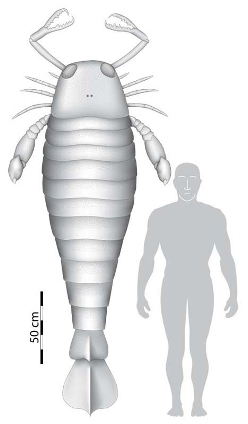
A fossilised claw from an ancient sea scorpion indicates that when alive this giant would have been about two and a half metres long, reports Dwain Eldred
Geoscientist Online 21 November 2007
The new find, from Devonian rocks 390 million years old, suggests that spiders, insects, crabs and similar creatures were much larger in the past than previously thought. The research is published online today in the Royal Society's journal Biology Letters . The find was made by Markus Poschmann, in a quarry near Prüm in Germany.
Dr Simon Braddy (Department of Earth Sciences, University of Bristol), co-author of the paper, said: "This is an amazing discovery. We have known for some time that the fossil record yields monster millipedes, super-sized scorpions, colossal cockroaches, and jumbo dragonflies, but we never realised, until now, just how big some of these ancient creepy-crawlies were."
Poschmann described finding the fossil: "I was loosening pieces of rock with a hammer and chisel when I suddenly realised there was a dark patch of organic matter on a freshly removed slab. After some cleaning I could identify this as a small part of a large claw. Although I did not know if it was more complete or not, I decided to try and get it out. The pieces had to be cleaned separately, dried, and then glued back together. It was then put into a white plaster jacket to stabilise it."